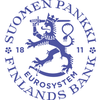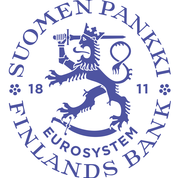Risks relating to housing loans have grown during the COVID-19 pandemic

The Finnish economy has come through the COVID-19 pandemic with less damage than expected. The pandemic hasn’t shaken the functioning of Finland’s financial system. The strong monetary and fiscal policy stimulus, the flexibility granted by the banks in the servicing of loans, direct business subsidies and the relaxation of macroprudential requirements and other banking regulations have all helped households and businesses.
The persistent indebtedness of Finnish households does, however, threaten to weaken Finland’s ability to cope with future economic crises. Housing mortgage lending has picked up since summer 2020 and the household debt burden has continued to accumulate.
Housing loans of long maturity are being taken out more than ever, and a greater proportion of new housing loans have been granted to people with a high level of debt relative to their income. The average size of new housing loans has also grown. ‘From the perspective of financial stability, Finns’ increased indebtedness and, particularly, the increasing provision of long housing loans give cause for concern,’ says Bank of Finland Deputy Governor Marja Nykänen.
The risks attendant on the high level of household debt should be reduced by a debt-to-income (DTI) cap and restricting the maximum maturity of new housing loans. ‘The continuing growth in household indebtedness and slackening of the terms on new housing loans increase the need for new macroprudential tools. A DTI-cap and limits on the maturity of housing loans should be introduced without further delay in order to halt the loosening of loan terms,’ stresses Deputy Governor Nykänen. ‘The new macroprudential tools should be directed at credit granted both by the banks and by other lenders.’
The share of household debt accounted for by housing company loans has continued to grow. ‘Housing company loans can blur house purchasers’ grasp of their overall housing costs and lure them into buying dwellings that are expensive relative to their ability to cover their debt and the maintenance costs of the property,’ clarifies Deputy Governor Nykänen. Limits on the maximum share and maturity of housing company loans would reduce the granting of the largest of such loans. Housing company loans intended for the purchase of housing should be regulated in a manner similar to housing loans.
Despite the pandemic, the profitability of Finnish banks improved in 2020. The reforms of banking regulation carried out in recent years have significantly boosted banks’ capital adequacy worldwide. ‘Finnish banks have adequate capital and have been able to lend to businesses and households during the pandemic,’ says Deputy Governor Nykänen.
Banks operating in Finland are exposed to the risks of the Nordic housing markets. The pandemic calmed the Nordic housing markets only momentarily. Rising house prices are magnifying housing market imbalances particularly in Sweden and Norway.
Losses from corporate loans have so far increased less than expected. We should, however, be prepared for growth in loan losses, as much of these tend to come with a lag after the worst phase of a crisis is over. ‘We have not yet seen all the effects of the COVID-19 pandemic on banks and non-financial corporations,’ says Deputy Governor Nykänen.
Keywords
Images
Links
About Suomen Pankki
The Bank of Finland is the national monetary authority and central bank of Finland. At the same time, it is also a part of the Eurosystem, which is responsible for monetary policy and other central bank tasks in the euro area and administers use of the world’s second largest currency – the euro.
Subscribe to releases from Suomen Pankki
Subscribe to all the latest releases from Suomen Pankki by registering your e-mail address below. You can unsubscribe at any time.
Latest releases from Suomen Pankki
Kutsu: Mediabriiffi pankkisääntelyn yksinkertaistamisesta 11.12.202510.12.2025 11:05:53 EET | Kutsu
Tervetuloa Euroopan pankkisääntelyn yksinkertaistamista käsittelevään mediabriiffiin torstaina 11.12.2025 klo 14.00. Tilaisuus järjestetään kokonaan Teamsissä. Suomen Pankin pääjohtaja Olli Rehn käy tilaisuudessa läpi Euroopan keskuspankin korkean tason työryhmän Euroopan komissiolle laatimia suosituksia, jotka koskevat pankkien sääntelyn yksinkertaistamista. EKP julkaisee työryhmän suositukset torstaina 11.12. Pääjohtaja Rehn on työryhmän jäsen ja käy tilaisuudessa suosituksia läpi EU:n ja myös Suomen näkökulmasta. Median edustajien on mahdollista esittää tilaisuudessa kysymyksiä. Pyydämme tilaisuuteen osallistuvia median edustajia ystävällisesti ilmoittautumaan viimeistään torstaina 11.12.2025 klo 10 tämän linkin kautta: Ilmoittaudu tilaisuuteen Ilmoittautuneille toimittajille lähetetään osallistumislinkki.
Med kort betalas mer än tidigare i virtuella betalterminaler och med mobilapplikationer10.12.2025 10:00:00 EET | Pressmeddelande
Under det första halvåret 2025 gjordes fler kortbetalningar som initierats via en mobilapplikation än tidigare, till ett värde av sammanlagt 8,1 miljarder euro. En större andel kortbetalningar görs i virtuella betalterminaler samtidigt som andelen betalningar i fysiska betalterminaler har minskat.
Kortilla maksetaan aiempaa enemmän virtuaalisilla maksupäätteillä ja mobiilisovellusten kautta10.12.2025 10:00:00 EET | Tiedote
Vuoden 2025 ensimmäisellä puoliskolla tehtiin aiempaa enemmän mobiilisovelluksella käynnistettyjä korttimaksuja, yhteensä 8,1 mrd. euron arvosta. Aiempaa suurempi osa korttimaksuista tehdään virtuaalisilla maksupäätteillä samalla kun fyysisillä maksupäätteillä tehtyjen maksujen osuus on pienentynyt.
Card payments increasingly made via virtual terminals and mobile applications10.12.2025 10:00:00 EET | Press release
Card payments initiated in mobile applications increased in the first half of 2025, reaching a total value of EUR 8.1 billion. A growing share of card payments is now made via virtual terminals, while the share of payments at physical terminals has declined.
År 2025 beviljade övriga finansinstitut mer företagslån jämfört med året innan4.12.2025 10:00:00 EET | Pressmeddelande
Nya företagslån utbetalades både under det tredje kvartalet 2025 och från början av året fram till september betydligt mer än ett år tidigare. År 2024 utbetalades sparsamt med företagslån från övriga finansinstitut.
In our pressroom you can read all our latest releases, find our press contacts, images, documents and other relevant information about us.
Visit our pressroom

